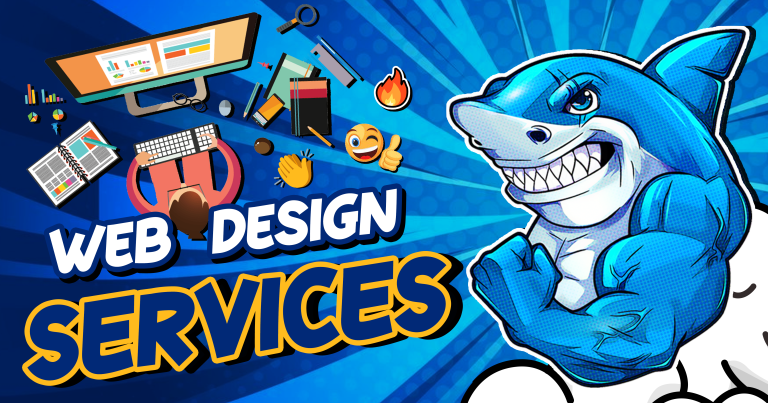
In the bustling digital landscape, where attention spans are fleeting and competition is fierce, the significance of captivating web design cannot be overstated. Your website serves as the digital storefront of your brand, the virtual handshake with your audience. In a split second, visitors form judgments that can shape their entire perception of your business. Thus, maximizing visual impact becomes paramount in the quest for online success. In this blog, we delve into the art and science of web design, uncovering invaluable tips to elevate your online presence. From color psychology to user experience optimization, each element plays a pivotal role in crafting a captivating digital experience. Whether you’re a seasoned designer seeking fresh inspiration or a business owner aiming to revamp your website, these insights will empower you to create visually stunning, highly engaging web interfaces. Let’s embark on a journey to unlock the secrets of maximizing visual impact and leave a lasting impression on every visitor who graces your virtual doorstep.
Responsive Design: Ensuring a Seamless Experience Across Devices
In today’s digital landscape, the diversity of devices used for accessing the web is greater than ever before. From smartphones and tablets to laptops and desktops, users expect websites to look and function flawlessly across all screen sizes. This is where responsive design comes into play. Responsive design is not just a trend but a necessity in creating a positive user experience and maximizing the reach of your website. Let’s delve into the world of responsive design and explore how it ensures a seamless experience across devices.
Flexible Grids and Layouts
At the heart of responsive design are flexible grids and layouts. Instead of fixed-width layouts, responsive websites use fluid grids that scale proportionally to fit the screen size. This allows content to rearrange itself smoothly, maintaining readability and usability across devices.
Media Queries and Breakpoints
Media queries are CSS techniques used to apply different styles based on the characteristics of the device, such as screen width, resolution, and orientation. By defining breakpoints in the design, developers can specify when certain layout adjustments should take place to accommodate various screen sizes.
Images and Multimedia
Images and multimedia elements play a crucial role in web design, but they can also pose challenges for responsive layouts. To ensure optimal performance and load times, responsive websites use techniques like responsive images and CSS media rules to adapt image sizes and resolutions based on the device’s capabilities.
Touch-Friendly Navigation
Mobile devices rely heavily on touch-based interactions, so responsive websites prioritize touch-friendly navigation elements. This includes larger tap targets, simplified menus, and intuitive gestures to enhance the user experience on touchscreen devices.
Performance Optimization
Responsive design goes hand in hand with performance optimization. By optimizing code, compressing assets, and prioritizing content, responsive websites load faster and deliver a smoother experience across devices. Performance is crucial for retaining users and reducing bounce rates, especially on mobile devices with slower connections.
Visual Consistency: Building Trust and Brand Recognition
In the crowded and competitive online world, establishing a strong brand presence is essential for success. One key aspect of this is visual consistency. Consistency in design elements such as colors, typography, imagery, and layout across all touchpoints of your brand helps build trust and fosters brand recognition. In this blog post, we’ll delve into the importance of visual consistency, how it contributes to building trust with your audience, and why it’s crucial for enhancing brand recognition.
The Importance of Visual Consistency
Visual consistency creates a cohesive and unified brand identity that resonates with your audience. When users encounter consistent design elements across your website, social media profiles, marketing materials, and products, they develop a sense of familiarity and trust in your brand. Consistency reinforces your brand’s personality and values, making it easier for users to connect with and remember your brand.
Establishing Brand Guidelines
To maintain visual consistency, it’s essential to establish comprehensive brand guidelines. These guidelines define your brand’s visual identity, including color palettes, typography choices, logo usage, and design principles. By providing clear guidelines for designers, marketers, and content creators, you ensure that all brand assets remain consistent across various channels and platforms.
Building Trust Through Consistency
Consistency breeds trust. When users encounter a consistent brand experience across different touchpoints, they feel confident in the reliability and professionalism of your brand. Consistent design instills a sense of credibility and authenticity, signaling to users that your brand is committed to delivering a cohesive and high-quality experience at every interaction.
Enhancing User Experience
Visual consistency plays a significant role in enhancing the user experience. A consistent design language makes it easier for users to navigate your website, find information, and complete tasks. Familiar design patterns and elements create a sense of predictability, reducing cognitive load and improving usability. Consistency contributes to a smoother and more intuitive user experience, leading to higher engagement and satisfaction.
Reinforcing Brand Recognition
Consistency is key to building brand recognition. When users repeatedly encounter consistent design elements associated with your brand, such as logo, colors, and typography, they begin to form strong associations with your brand identity. Over time, these associations become ingrained in their memory, making your brand more recognizable and memorable amidst the sea of competitors.
Whitespace: The Unsung Hero of Web Design
In the world of web design, there’s a crucial yet often underestimated element that plays a significant role in shaping user experience and aesthetics: whitespace. Also known as negative space, whitespace refers to the empty space between elements on a webpage. Despite its name, whitespace isn’t wasted space; instead, it’s a powerful design tool that can enhance readability, improve comprehension, and guide users’ attention. Let’s explore why whitespace is the unsung hero of web design and how it can elevate the overall user experience.
- Enhances Readability: Whitespace helps to break up content into digestible chunks, making it easier for users to scan and comprehend information. By providing breathing room around text and images, whitespace reduces visual clutter and fatigue, leading to improved readability and engagement.
- Focuses Attention: Strategic use of whitespace directs users’ attention to key elements on the page, such as headlines, call-to-action buttons, or important messages. By surrounding important content with ample whitespace, designers can make it stand out and increase its visibility, leading to higher conversion rates and engagement.
- Creates Balance and Harmony: Whitespace plays a crucial role in balancing the visual elements of a webpage. By carefully spacing out content and graphical elements, designers can create a sense of harmony and proportion, ensuring that the design feels cohesive and aesthetically pleasing.
- Improves User Experience: Whitespace contributes to a more pleasant and intuitive user experience by reducing cognitive overload and making navigation easier. By giving elements room to breathe, whitespace prevents overcrowding and confusion, allowing users to focus on the most relevant content and tasks.
Conclusion
Mastering the art of captivating web design is essential for maximizing your online presence and leaving a lasting impact on visitors. By implementing the tips discussed in this blog, such as prioritizing user experience, optimizing for mobile devices, and leveraging visual elements effectively, you can create a website that not only captures attention but also engages and converts your audience. Remember, your website serves as the digital face of your business, so investing in its design is investing in your brand’s success.
For further inquiries or assistance in enhancing your web design, feel free to reach out to us at Rank Fortress. Our team of experts is dedicated to helping businesses across the USA craft visually stunning and highly functional websites. Contact us today at (904)770-5783 to start making a memorable impression online.

